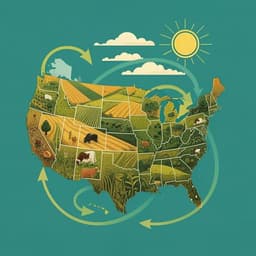
Agriculture
Global crop yields can be lifted by timely adaptation of growing periods to climate change
S. Minoli, J. Jägermeyr, et al.
This innovative research by Sara Minoli, Jonas Jägermeyr, Sennethold Asseng, Anton Urfels, and Christoph Müller explores the adaptation of crop calendars under climate change scenarios. The study reveals that timely adaptation could boost maize, rice, sorghum, soybean, and wheat yields by approximately 12%, highlighting the importance of crop management strategies in mitigating climate impacts.
~3 min • Beginner • English
Related Publications
Explore these studies to deepen your understanding of the subject.







